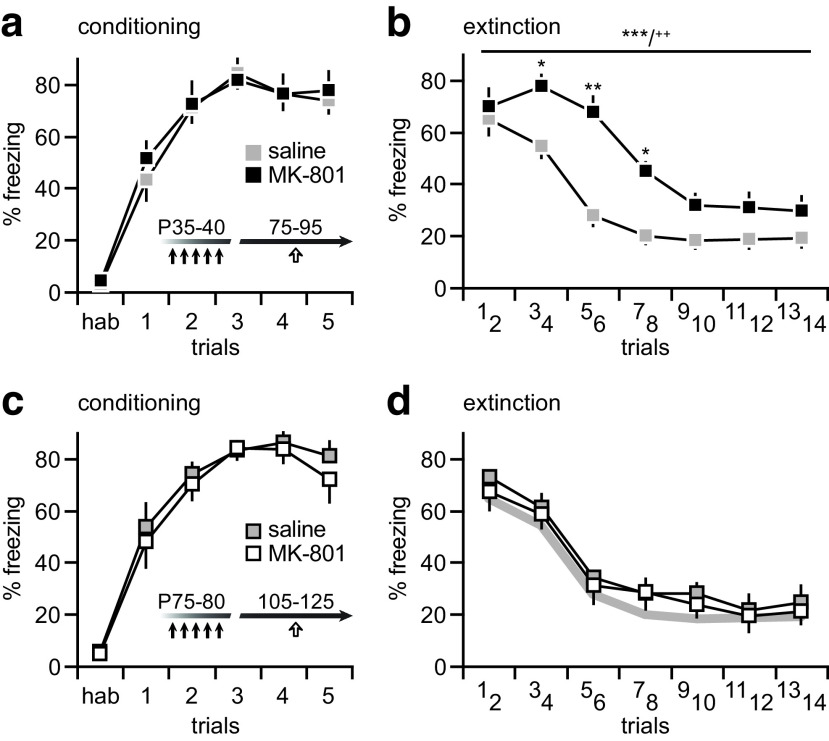Figure 5.
Adolescent MK-801 exposure increases the level of freezing response during extinction. a, Relative to saline-treated controls (n = 7), MK-801 exposure during adolescence (black arrows, P35–P40; n = 8) did not disrupt the acquisition of trace fear conditioning in adulthood (white arrow, P75–P95), as revealed by the percentage of freezing. b, However, the pattern of freezing response during extinction (24 h after conditioning) is markedly altered in adolescent MK-801-treated rats. Typically, the level of freezing response to the conditioned tone diminishes over repeated trials (14 trials of 60 s each, see Materials and Methods for details), as observed in saline-treated controls rats. This was not the case in rats that underwent adolescent MK-801 exposure, which exhibited a higher degree of freezing behavior during extinction (main effect of treatment: F(1,91) = 52.1, ***p < 0.0001; main effect of trials: F(6,91) = 35.7, ***p < 0.0001; treatment × trials interaction: F(6,91) = 3.1, ++p < 0.01; two-way ANOVA), in particular from trials 3–8 (*p < 0.05, **p < 0.005, Tukey's post hoc test). c, Similar to the adolescent cohort shown in a, rats that received saline (n = 6) or MK-801 (n = 7) injections during adulthood (i.e., P75–P80) exhibited a normal pattern of freezing response during the acquisition of fear conditioning (white arrow, P105–P125). d, Interestingly, MK-801 exposure during adulthood failed to disrupt the normal pattern of trace fear extinction. The gray line depicts the extinction profile of saline-treated controls shown in b.

